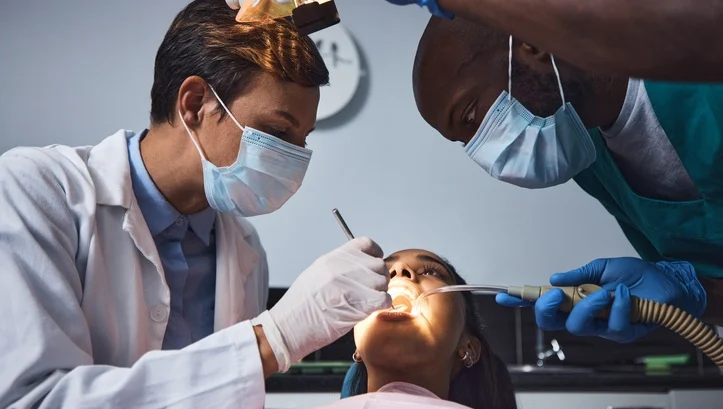
Avoiding Common Mistakes in Endodontics
Endodontics, often referred to as root canal therapy, is a crucial component of modern dentistry. It can mean the difference between saving a natural tooth and losing it. However, even highly skilled dentists are not immune to mistakes when performing endodontic procedures. These mistakes can compromise patient outcomes, lead to unnecessary complications, and diminish trust in your practice.
For dentists, particularly those working locum tenens or managing a busy practice, understanding and avoiding common endodontic errors isn’t just beneficial—it’s essential.
Below, we explore common challenges in endodontics and practical strategies to help you avoid them. Whether you’re an experienced endodontist or a general dentist incorporating root canal therapy into your offerings, this guide will make a valuable addition to your clinical toolbox.
6 Common Endodontics Mistakes and How to Avoid Them
Endodontic errors can lead to poor treatment outcomes such as persistent infections, failure of the root canal procedure, and even tooth loss for the patient. These complications can affect the success of your practice in the following ways:
- Reputation Management: Mistakes could tarnish the trust patients place in you, which is vital for practice growth.
- Malpractice Risks: Errors increase the likelihood of legal disputes, especially if the patient feels the issue stems from negligence.
- Time and Cost: Retreatment of endodontic cases can cost a dentist valuable time, resources, and potentially revenue.
Success in endodontics requires precision, a thorough understanding of anatomy, and attention to detail in each phase of the procedure. Now, let's explore and address common mistakes.
1. Incorrect Diagnosis or Misinterpretation of Radiographs
One of the most critical aspects of endodontic success is accurate diagnosis. Misinterpreting radiographs or failing to identify the source of tooth pain can lead to incorrect or incomplete treatment.
Common Issues:
- Overlooking additional root canals
- Identifying secondary infections inaccurately
- Failing to detect vertical root fractures in the images
How to Avoid:
- Use Advanced Imaging: Complement standard radiographs with CBCT (Cone-Beam Computed Tomography) where required. CBCT provides 3D imaging for a clearer view of the root and surrounding structures.
- Practice Regular Training: Stay updated on radiographic interpretation techniques. Diagnostic errors often stem from a lack of continuing education.
Early detection ensures that the correct root canals are treated, minimizing post-treatment complications.
2. Over-Instrumentation or Under-Instrumentation
Instrumentation involves cleaning and shaping the root canals to remove infected pulp completely. Errors in this stage are a significant cause of treatment failure.
Common Issues:
- Over-instrumentation can damage periapical tissues, causing pain or swelling.
- Under-instrumentation can leave infected debris, leading to treatment failure.
How to Avoid:
- Use Apex Locators: These tools improve precision by helping measure the exact working length of the root canal.
- Follow Manufacturer Guidelines: Familiarize yourself with the taper and diameter limits for endodontic files.
- Maintain Attention to Detail: Avoid fatigue in long procedures, as this may lead to errors.
Proper shaping prevents inadequate cleaning, ensuring a well-prepared canal system for the next treatment phase.
3. Failure to Properly Clean and Shape the Root Canal
Incomplete cleaning and shaping of the root canal can leave debris or bacteria behind, leading to persistent infection.
Common Issues:
- Skipping the use of irrigants like sodium hypochlorite for complete debridement.
- Missing accessory canals that harbor bacteria.
How to Avoid:
- Invest in Efficient Irrigation Systems: Ultrasonic or sonic irrigation systems improve the effectiveness of cleaning solutions.
- Examine the Anatomy Thoroughly: Use tools like magnifying loops or dental microscopes to ensure all canals are located and treated.
- Follow a Standardized Protocol: Create and adhere to a checklist covering every step of cleaning and shaping.
When preparation is thorough, you’ll create an environment that supports proper sealing and filling later.

4. Inadequate Sealing and Filling of the Root Canal
Filling the cleaned and shaped root canal is the final step in ensuring the tooth’s longevity. Failing to seal the canal system properly increases the risk of reinfection.
Common Issues:
- Gutta-percha not fully reaching the working length.
- Voids between the filling material and canal walls.
How to Avoid:
- Practice Warm Vertical Condensation: This technique enhances the quality of gutta-percha compaction, ensuring better fills.
- Use High-Quality Sealers: Pair durable, biocompatible sealers with filling materials.
- Perform Post-Operative Radiographs: Confirm the placement and density of the obturation material using radiographs before completing the procedure.
Proper sealing adds the final touch to a successful root canal therapy.
5. Not Addressing Cracks or Fractures in the Tooth
Undiagnosed cracks can lead to recurring pain or reinfection, causing the entire procedure to fail.
Common Issues:
- Overlooking cracks during the diagnosis phase.
- Misjudging the severity of fractures.
How to Avoid:
- Use Specialized Diagnostic Tools: Transillumination and dyes can help detect cracks invisible to radiographs.
- Warn Patients About Risk Factors: Educate patients about the risks of cracked teeth, particularly in cases of bruxism or clenching.
Managed correctly, cracks and fractures need not interfere with treatment success.
6. Improper Post-Operative Care or Instructions
Endodontic treatments don’t end with the sealing of the root canal. Proper aftercare ensures that the treated tooth heals optimally.
Common Issues:
- Neglecting to advise patients on post-treatment pain management.
- Failing to schedule follow-up visits to confirm healing.
How to Avoid:
- Provide Clear Instructions: Verbally explain aftercare tips, then reinforce them with written instructions.
- Follow Up Diligently: Check in with the patient after a week to monitor progress, and identify early signs of complications.
Effective post-operative management is essential for patient satisfaction and long-term treatment results.
Advance Your Endodontic Expertise with AMN Healthcare
Mistakes in endodontics are avoidable with the proper tools, enhanced training, and thorough protocols. Implement these practices consistently to improve patient outcomes, boost your skillset, and protect your reputation as a dentist.
In locum tenens or permanent roles, standing out as a reliable and skilled dental professional requires excellence in preparation, execution, and patient care. Consistently following high standards solidifies your reputation and makes you an invaluable asset to any dental team.
AMN Healthcare can help you take the next step in your career by connecting you with the right opportunities. Whether you're looking for flexibility or a permanent position, our network and expertise make finding your ideal role easier than ever.



